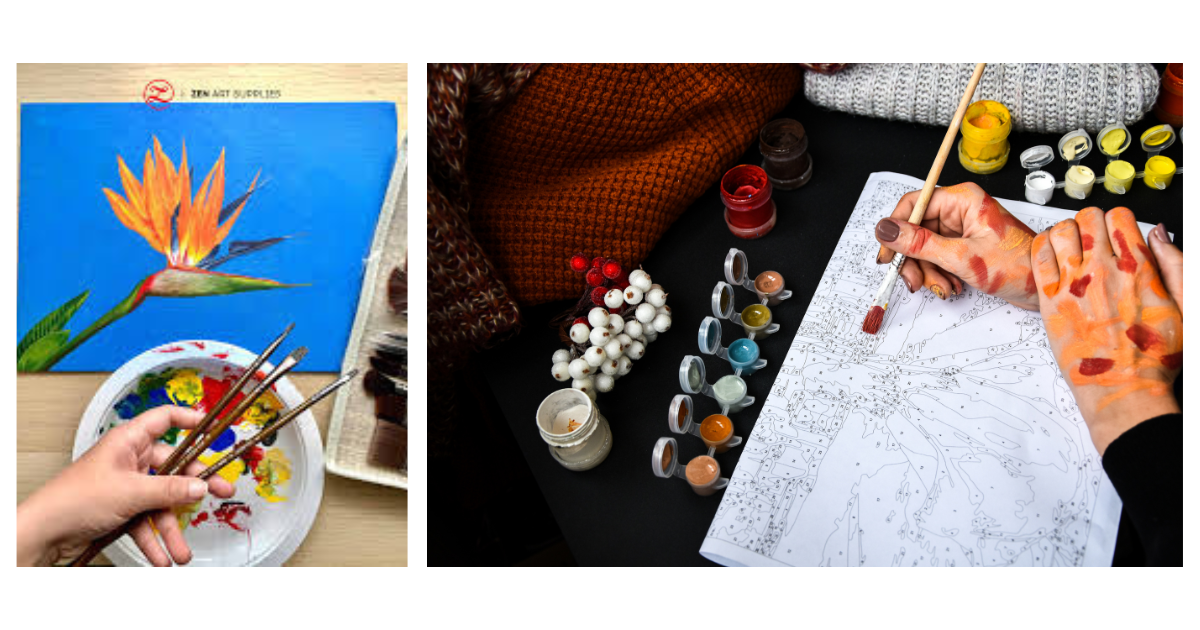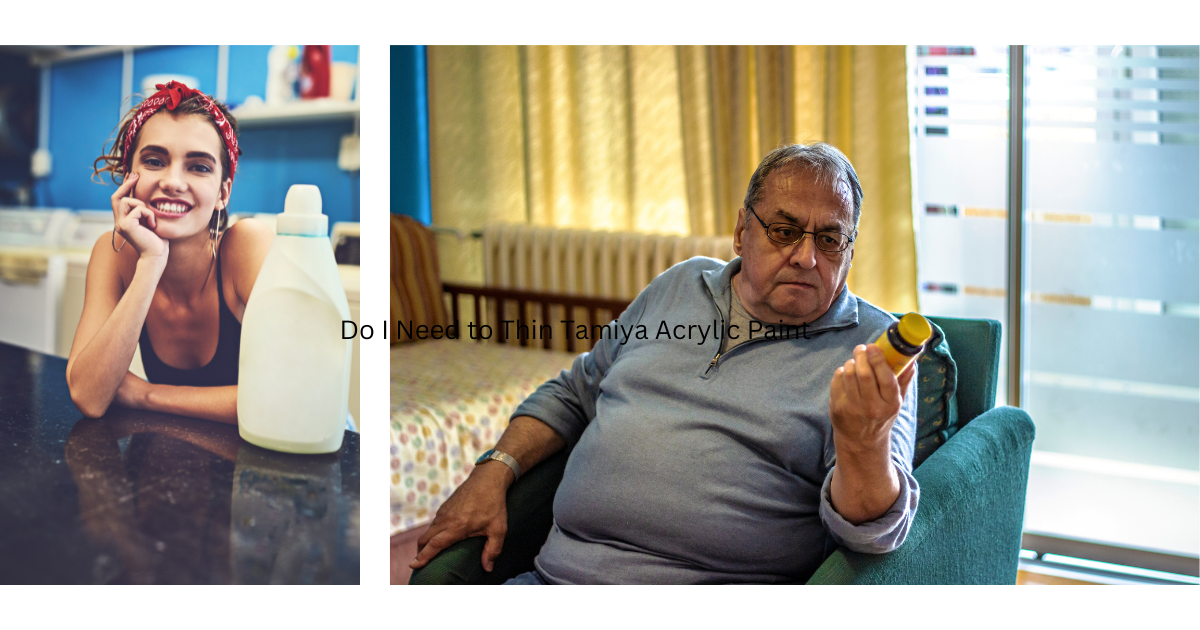Yes, watercolor can be used on skin. When using watercolor on skin, it is best to use a light touch and build up the color slowly. It is also important to make sure the paint is fully dry before coming into contact with clothing or other surfaces.
- Begin by mixing your watercolors together to create the desired shade
- Next, wet a brush with clean water and apply it to the area of skin you wish to paint
- Once the skin is damp, pick up your brush loaded with paint and apply it in long, even strokes
- the paint to dry completely before adding any additional colors or layers
DO’S & DON’TS: How to Paint with Watercolor
What Paint is Safe for Skin
When it comes to painting, there are a lot of different products on the market. So, how do you know which paint is safe for skin? Here are a few things to keep in mind when choosing paint for your next project:
- Water-based paints are typically the safest option for skin. These paints are less likely to cause irritation and are easier to clean up if you do get them on your skin.
- If you’re using oil-based paints, make sure to wear gloves and long sleeves to protect your skin. These types of paints can be more irritating to the skin and are harder to clean up if they get on you.
- Be sure to read the labels on all of the paint products you’re considering. Some paints may contain harmful chemicals that can cause skin irritations or other problems. Look for non-toxic options that are specifically designed to be safe for use on skin. following these tips, you should be able to find a paint that is safe for skin and won’t cause any irritation or other problems.
Does Watercolor Stain Skin
Watercolor paint is a type of paint made with pigments suspended in a water-based solution. Because watercolors are typically used on paper, it’s not common for the paint to come into contact with the skin. However, if you do get watercolor paint on your skin, it’s important to know that the pigment can potentially stain your skin.
If you have watercolor paint on your skin, the first thing you should do is try to remove it with soap and water. If that doesn’t work, you can try using a mild abrasive like baking soda or toothpaste. If those options don’t work either, then you may need to resort to using rubbing alcohol or nail polish remover.
Once you’ve removed the pigment from your skin, be sure to moisturize the area well. Watercolor pigments can be drying, so it’s important to replenish your skin’s moisture levels.
What Paint Can Be Used on Face
One of the first decisions you need to make when creating a painting is what type of paint to use. You have many options available to you, each with its own set of benefits and drawbacks. One type of paint that can be used on your face is acrylic paint.
Acrylic paint is fast-drying, non-toxic, and easy to clean up with just soap and water. It also has a wide range of colors available, so you can find the perfect shade for your needs. However, acrylic paint can be difficult to work with if you’re not familiar with it, as it can become sticky and hard to control.
Another option for painting your face is watercolor paint. Watercolor paint is much easier to work with than acrylics, but it doesn’t provide as much coverage. It’s also important to note that watercolors are not waterproof, so they’ll need to be sealed if you want them to last.
Watercolor Face Painting for Beginners
Watercolor face painting is a beautiful and unique way to paint your face. It’s perfect for special occasions like Halloween, or for just having fun with friends. If you’re new to watercolor face painting, don’t worry!
We’ll walk you through everything you need to know, from choosing the right supplies to creating stunning designs. Let’s get started! Choosing Your Supplies
The first step is to gather your supplies.
You’ll need:
- A set of watercolors
- A small brush
- A cup of water
- Paper towels
- A mirror Optional
supplies include:
- Face paints in complementary colors
- Stencils Now that you have everything you need, let’s move on to choosing the right colors.
Can We Use Acrylic Paint on the Face
Acrylic paint is a versatile medium that can be used for a variety of different projects. One common question that arises is whether or not acrylic paint can be used on face. The answer is yes, but there are a few things to keep in mind when doing so.
For starters, it’s important to choose an acrylic paint that is non-toxic and specifically designed for use on skin. These paints can typically be found at craft stores or online. Once you have the right kind of paint, make sure to test it out on a small area of skin before applying it to your face.
This will help ensure that you don’t have any adverse reactions to the paint. When painting your face with acrylics, start by applying a thin layer of paint and then build up from there as needed. It’s also important to work in small sections so that the paint doesn’t dry out before you’re able to blend it properly.
And finally, make sure to remove all of the paint from your face before going to bed!
Can You Use Fabric Paint on Skin
Sure! Fabric paint is a water-based acrylic paint, so it is safe for skin. We recommend using our Soft Fabric Paint, which is specifically designed for fabric and won’t crack or peel.
It’s also non-toxic and machine washable, so you can wear your painted creations over and over again.
Can You Use Finger Paint on Your Face
Sure, you can use finger paint on your face- but we don’t recommend it! Here’s why: Finger paint is made with pigments that are not meant to be used on the delicate skin of the face.
These pigments can actually irritate and damage the skin. In addition, most finger paints do not contain any SPF, so they offer no protection from the sun’s harmful rays. If you’re looking for a fun way to decorate your face, try using face paint instead.
Face paints are specifically formulated for safe use on the face and are available in a wide variety of colors and designs. Plus, many brands offer products that are hypoallergenic and safe for sensitive skin.
Is Watercolor Paint Toxic
When it comes to watercolor paint, the short answer is no, it is not toxic. Watercolors are made with pigments suspended in a water-soluble binder. When mixed with water, the paint can be applied to a variety of surfaces.
The pigment will eventually dry, leaving behind the color on the surface. Watercolor paints are safe for both children and adults to use. In fact, using non-toxic watercolors is often recommended for young children who are just starting to explore their creativity through art.
Non-toxic watercolors are also great for those with allergies or sensitivities to certain chemicals as they do not contain any known irritants or allergens. So whether you’re a beginner or a seasoned artist, rest assured that you can safely enjoy creating beautiful works of art with watercolor paints!
Can You Use Watercolour Paints on Skin?
Watercolour paints are not meant to be used on skin. They are made with pigments that can be harmful if ingested, and they are not formulated to be safe for use on mucous membranes or broken skin. However, there are watercolor paints available that are specifically made for face painting.
These products use FDA-approved colors and are safe to use on skin.
How Do I Paint My Skin With Watercolors?
Watercolor painting is a unique and beautiful way to express yourself through art. Although it may seem daunting at first, painting your skin with watercolors is actually quite simple! Just follow these easy steps and you’ll be on your way to creating stunning works of art:
- Begin by mixing your desired colors together on a palette. Make sure to use plenty of water so that the paint will go on smoothly.
- Next, apply the paint to your skin using a brush or sponge. Start with small amounts and build up the color gradually until you’re happy with the result.
- Once you’re finished, allow the paint to dry completely before adding any additional layers or details. And that’s it – you’ve successfully created a work of art using nothing but watercolors and your own body!
Is Watercolor Toxic to Humans?
No, watercolor is not toxic to humans. Watercolors are made with pigments that are suspended in a water-based solution. When used properly, they pose no threat to human health.
However, some pigments used in watercolors can be toxic if ingested or if they come into contact with the skin or eyes.
What Kind of Paint Can You Use on the Skin?
There are a few different types of paint that can be used on the skin, but the most common and safe type is body paint. Body paint is specially made to be non-toxic and safe for use on the skin. It comes in a variety of colors and can be applied with a brush or sponge.
Another type of paint that can be used on the skin is face paint. Face paint is also non-toxic and safe for use on the skin. It usually comes in brighter colors than body paint, and it can be applied with a brush or sponge.
A third type of paint that can be used on the skin is temporary tattoo ink. This ink is designed to be placed on the skin and then removed after a few days. It’s generally not as bright or colorful as a body or face paint, but it’s an option if you want something that will last longer than just one day.
Conclusion
Yes, you can use watercolor on your skin! In fact, it can be a fun and easy way to add a splash of color to your look. Here are a few tips to help you get started:
- Choose the right colors. Watercolors come in a wide range of colors, so it’s important to choose ones that will work well with your skin tone. If you’re not sure which colors to use, start with a basic palette of light, medium, and dark shades.
- Prep your skin. Before you start painting, make sure your skin is clean and dry. Apply a thin layer of Vaseline or petroleum jelly to any areas that you don’t want the paint to adhere to (like your eyebrows). This will help create a barrier between your skin and the paint.
- Paint away! Have fun experimenting with different techniques and designs. Remember that watercolors are meant to be transparent, so don’t worry if they’re not completely opaque. Once you’re finished painting, let your design dry completely before adding any additional layers of color or topcoat (like clear nail polish).










